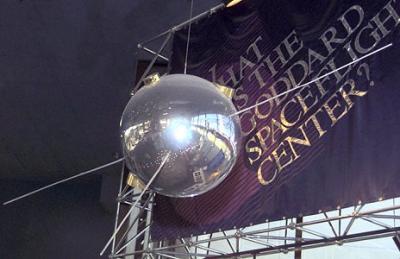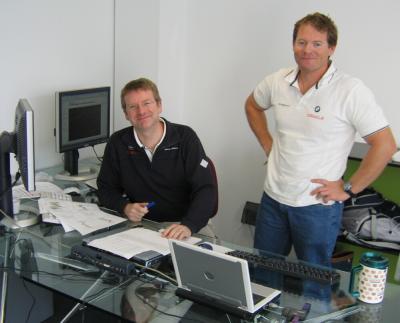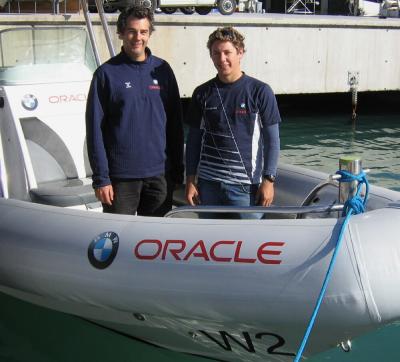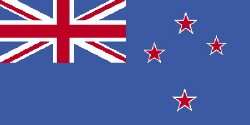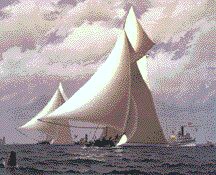Rather than going on a Grand Tour as most of his Harvard classmates traditionally did (and unable to afford it anyway), and being something of a non-conformist, in 1834 Richard Henry Dana Jr left Harvard to enlist as a common sailor on a voyage around Cape Horn, on the brig
Pilgrim. He returned to Massachusetts two years later. He kept a diary throughout the voyage, and after returning he wrote a recognized American classic,
Two Years Before the Mast, published in 1840, eleven years before that famous yacht race around the Isle of Wight.
Our many clever readers (of this blog) will need no help in drawing a number of parallels between Mr Dana's journey and the one we are in the midst of today, 166 years later. And how time does fly....
+ 27 years ago this week your editor moved to Newport, Rhode Island and had his first eye-opening exposure to the America's Cup.
+ 16 years ago today was an historic America's Cup moment, at least on shore. On 26 April 1990 the final court decision came down following the controversial 1988 Cup, confirming once and for all San Diego Yacht Club's win two years (and several million dollars in legal fees) earlier. This cleared the way for AC 27 to be held off San Diego in 1992. Significantly, it also marked the launch of the new America's Cup Class which, in the meantime, had been agreed with the Royal Perth Yacht Club -- SDYC's challenger-of-record-in-waiting.
+ Three years ago this week we had just wrapped up a long, hard week of meetings in Geneva with our friends from Alinghi, during which we essentially agreed the event plan for AC 32 as well as Version 5 (!) of the AC Class Rule. Today, nine new V5 ACC yachts are either in the water or soon will be, to say nothing of the dozen or so V4 yachts that have been modified to V5.
+ Two weeks from tomorrow we willl begin Act 10, an intense week of round-round match racing, followed almost immediately by Act 11's three days of fleet racing (five races). Much will be learned by all 12 teams who are urgently making final preparations, and no doubt there will be a few interesting revelations about relative performance. Perhaps most interesting will be what is
not revealed.
+ One year from today we will be more than half way through the 20 round robin races in the Louis Vuitton Cup. A week later, on 5 May 2007, RR racing will be over and seven of the eleven Challengers will have been "excused from further participation." The other four Challengers will advance to the LVC knock-out semifinals.
For those of you not in Valencia it may be difficult to imagine the level and intensity of preparation going on here -- within the team bases, at ACM headquarters and the new race committee shore base, at the media center, all around the Port America's Cup, and, of course, out on the water. Never in my 27 years "before the mast" has there been more AC-related activity in one place at one time, not even close. And we still have another year to go!
The past four days have been unusually windy and rough, keeping the teams on shore. This morning conditions having moderated, and today we expect to see most if not all 12 teams on the water at the same time (and for the first time this year). In the few days now remaining before Act 10, no doubt there will be a number of interesting developments on shore and off.
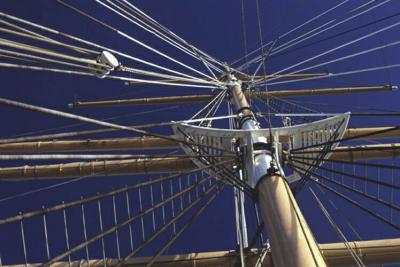
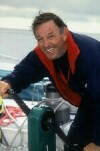 Today we heard from our old friend Bob Fisher (GBR), dean of the "proper" yachting journalists (not to be confused with bloggers!) in response to our recent post, Friendly Competition. "Fish" is writing what no doubt will be a lengthy and very thorough history of the Cup. He recently turned up an interesting tidbit while doing research in the NYYC library, and writes:
Today we heard from our old friend Bob Fisher (GBR), dean of the "proper" yachting journalists (not to be confused with bloggers!) in response to our recent post, Friendly Competition. "Fish" is writing what no doubt will be a lengthy and very thorough history of the Cup. He recently turned up an interesting tidbit while doing research in the NYYC library, and writes: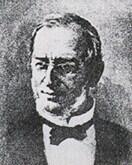 George L. Schuyler (in
George L. Schuyler (in
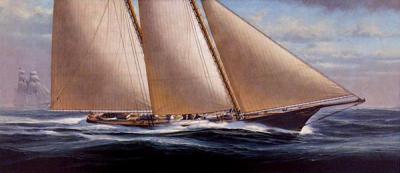
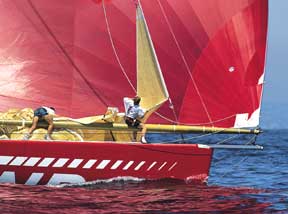
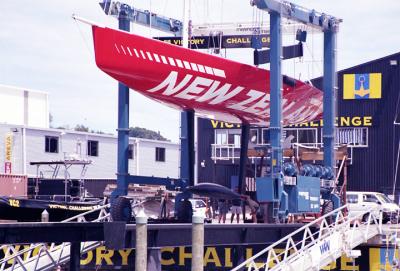
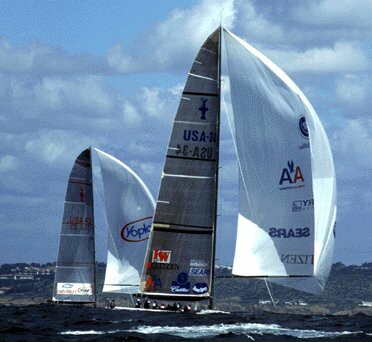
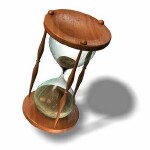
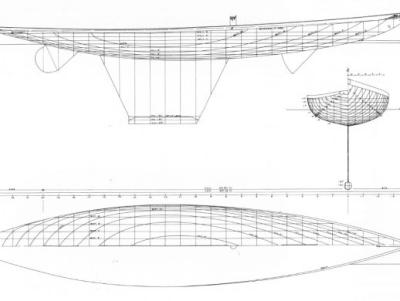
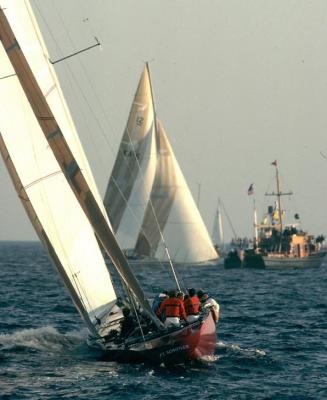
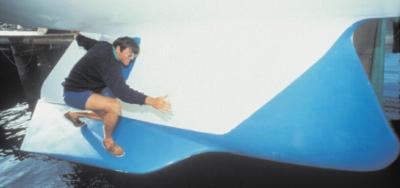
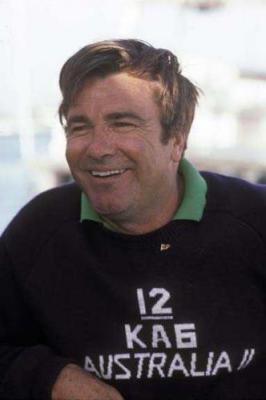 Ben Lexcen, 1936-1988. Photo© Dan Nerney.
Ben Lexcen, 1936-1988. Photo© Dan Nerney.